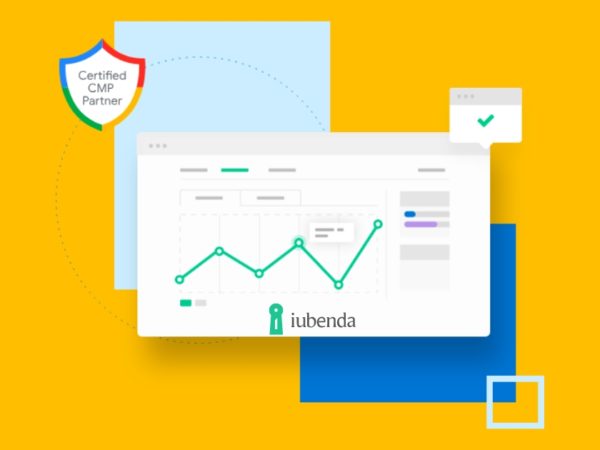Today, enterprises are under tremendous pressure to keep their businesses running. If your business is set to operate seamlessly, your security team needs to safeguard your business from all threats that could interfere with your operations.
The thing is, what is secure today might be within an insecurity scope tomorrow. This phenomenon is caused by the fact that as algorithms evolve, new vulnerabilities emerge, and cyber-attackers develop new ways of breaking the cryptography that most businesses rely on.
Cryptanalysis, known as code-tracking, is an in-depth understanding of techniques used to decrypt and inquire code, ciphers, or encrypted text. Cryptanalysis uses numerical rules to search for an algorithm’s susceptibility and branches further to cryptography in info security systems.
This guide teaches you all you need to know about cryptanalysis. You will have a detailed understanding of the topic and learn how to make your organization immune from cryptanalysis.
What is Cryptanalysis?
<img alt="YouTube video" data-pin-nopin="true" data-src="https://kirelos.com/wp-content/uploads/2023/02/echo/maxresdefault.jpg63f737216ca59.jpg" height="720" nopin="nopin" src="data:image/svg xml,” width=”1280″>
The cryptanalysis process aims to study cryptographic systems to identify weaknesses and information leakages. You can consider it as exploring flaws in a cryptographic system’s underlying mathematical architecture, including implementation vulnerabilities like side-channel attacks and weak entropy inputs.
Cryptographic systems refer to a computer system that employs cryptography, a method for protecting information and communication through code so that only those it is intended to can process it.
Cryptanalysis Vs. Cryptography
Right from the definition, in cryptography, you are concerned with hiding a message by converting it into hidden text before transmitting it over insecure channels. On the other hand, cryptanalysis involves you obtaining plaintext from hidden messages over an insecure channel.
Cryptography has proven to be an asset while transmitting the information. An excellent example to showcase its use cases is in bank transactions and email messages where it is necessary to secure info. Cryptography schemes include secret keys, public keys, and hash functions.
Cryptanalysis is an art tied to decrypting cipher text to plain one. In this case, an authorized person tries to decrypt your message by eavesdropping on the channel.
Who Uses Cryptanalysis?
Numerous organizations use cryptanalysis, including governments wanting to decrypt other nations’ private communications, businesses testing security features for their security products, hackers, crackers, independent researchers, and academic practitioners looking to identify vulnerabilities in cryptographic protocols and algorithms.
The advancement of cryptology is propagated by the unending battle between cryptographers who want to secure data and crypt analysts who work to crack cryptosystems.
The goals of an attacker are tied to their specific needs for performing cryptanalysis. Successful cryptanalysis usually does not go beyond deducing information from hidden text. However, it is enough based on the attackers’ needs, whose goals vary from one attacker to another but are not limited to:
- Total break – Finding secret keys.
- Global deduction – Finding equivalent functional algorithms for encryption and decryption without knowledge of secret keys.
- Information deduction – Gaining info about cipher texts and plain texts.
- Distinguishing algorithm – Distinguishing encryption output from random bits permutation.
Let’s look at a practical example that’s easy to understand. However, you should know that this example does not apply to modern cryptographic ciphers, but it’s a good one to build your understanding.
The frequency analysis technique can be used on basic encryption algorithms. The basic class encryption algorithms perform monoalphabetic substitutions replacing each letter with a predetermined mapped letter from the same alphabet.
This model is an improvement from more basic techniques that shifted letters by some constant number of positions and replaced the old letters with new ones from the resultant alphabetic position.
While the monoalphabetic substitution ciphers are resilient to blind searches, they are not immune and can be easily broken down with pen and paper. So, how? Frequency analysis employs the characteristic feature that natural language is not random and monoalphabetic substitution does not hide the statistical properties of the language.
Let’s take a closer look, and narrow it down to a specific alphabet like “E” with a particular frequency, say 12.7%. When you substitute for E to get a cipher text, its resultant text retains its original frequency. If this frequency is known to the cryptanalyst, they can quickly determine the substitutions to decipher your ciphertext.
Types of Cryptanalytic Attacks
Cryptanalytic attacks exploit flaws in your system, deciphering its cryptography. To launch a cryptanalysis assault, you need to know the nature of the methods and plaintext’s general properties. A plain can be in any language, including English or Java code.
Here is a list of the types of attacks. The first five are the most common; the others are rare and occasionally left out; it’s good to know them.
- Know-Plaintext Analysis (KPA): In this case, the attacker has some access to the plaintext-ciphertext pairs. Next, all the attacker has to do is map the pairs to find the encryption key. This attack is easy to use as the attacker has a wealth of knowledge at their disposal.
- Chosen-Plaintext Analysis (CPA): In this case, the attacker picks random plaintexts, uses them to obtain the corresponding ciphertext, and eventually cracks the encryption key. This method is similar to KPA but less likely to be successful.
- Ciphertext-Only Analysis (COA): In this case, some ciphertext is known to the attacker, so they try to find the corresponding plaintext and encryption key. The attacker has an understanding of your algorithm. This technique is the most challenging method. However, it has a significant success rate since it only requires cipher text.
- Man-In-The-Middle (MITM) Attack: It occurs when two parties use a key to share communication through a seemingly secure but compromised channel.
- Adaptive Chosen Plaintext Analysis (ACPA): This case resembles CPA. ACPA uses identified plaintext and ciphertext based on the data it has learned from past encryptions.
- Brute Force Attack: In this case, the attacker uses algorithms to predict the possible logical sets of plaintexts. The guessed plain text is then ciphered and compared against the initial cipher.
- Dictionary Attacks: In this case, the attacker runs either plaintext or keys against a word dictionary. This technique is often used when trying to crack some encrypted passwords.
How Does Cryptanalysis Work?
The core goal driving cryptanalysis is exposing flaws or circumventing cryptographic algorithms. Cryptographers use research from cryptanalysts to advance existing algorithms or upgrade subpar methods.
With cryptography creating and enhancing encryption ciphers and other techniques, cryptanalysis, on the other hand, focuses on deciphering encrypted data. The two operations converse and are confined under the domain of cryptology, the mathematical study of codes, ciphers, and related algorithms.
Researchers toil paying close attention to develop attack strategies that beat encryption schemes, initiating the decryption of ciphertext encrypted algorithms without needing encryption keys. Often, you use cryptanalysis to expose flaws in your conception and execution methods.
How to Protect Against Cryptanalytic Attacks
Unfortunately, there isn’t much you can do to establish immunity against cryptanalysis besides using a secure encryption scheme, ciphers across your entire digital infrastructure, and keeping your software updated. However, here are some tips you can use to enhance safety.
- Use updated encryption and hashing algorithms. A good scenario would be avoiding tools like SHA1 and MD5, which are no longer considered secure.
- Use long encryption keys. For instance, your RSA keys should be at least 2048 bits long for VPN handshakes.
- Recall destroying superseded keys.
- Use strong passwords and implement a tested random number generator to curate your keys.
- Salt your hashes. Here you are adding random noise to your hashes. You should keep your salt long and randomized, just like when working with passwords.
- Employ perfect forward secrecy (PFS) to prevent past and future sessions from decryption if your keys are compromised. This is often used in virtual private networks (VPNs).
- Obfuscate encrypted traffic – You are ensuring that your traffic seems regular and not exposing the fact that it is encrypted. Software like Obfsproxy is a good example tool that works well with the Tor network.
- Integrate an intrusion detection system (IDS) into your infrastructure – This system will notify you of a breach or attack. However, this does not stop the violation. It, however, cuts down your response time, saving your system from severe damage. It would be best to have a good IDS integrated into your system.
Applications of Cryptanalysis
Cryptanalysis has several real-life applications. It may sometimes be combined with cryptography to achieve its full potential. Here are some applications:
#1. Integrity in Storage
You can use cryptanalysis to maintain integrity in storage. In this case, you use locks and keys in your access control system to protect data from unwanted access. You can also create cryptographic checksums to determine the authenticity of data stored in dynamic environments where viruses are prone to modified data approaches.
The checksum is developed and compared with an anticipated value during data transmission. Cryptanalysis helps secure storage media that are vulnerable to assault following its high volumes of data or those that have been exposed for long periods.
#2. Identity Authentication
In identity authentication, your main focus is confirming a user’s authority to access data. Cryptanalysis facilitates this process during password exchange. Modern systems combine cryptographic transformations with a person’s attributes to reliably and efficiently identify users.
The passwords are stored in encrypted formats where applications with access can use them. Since the passwords are stored in plain text, your systems’ security is not jeopardized.
#3. System Credentials
You can use cryptoanalysis and cryptography to create a system’s credentials. When users log in to your system, they will always have to produce proof of personal credentials before they are let in.
Electronic credentials are now being created to facilitate electronic verifications. This technique is often applied in smart cards to conduct cryptographic operations, including storing data.
#4. Digital Signatures
Digital signatures are often used in communication to authenticate that messages are from a known sender. This is akin to pen and paper document signing. Of course, if digital signatures are to replace analog signatures, they are fabricated using cryptanalysis technology.
This has seemed helpful in cases where organizations have teams distributed in many locations and have yet to meet in person to perform some collaborated paperwork. With digital signature formats, anyone possessing the public key can verify a document, as widely adopted in the cryptocurrency domain.
#5. Electronic Funds Transfers (ETFs)
Recently, you have seen electronic money replace cash transactions. Electronic fund transfers, virtual currencies, digital gold money, cryptocurrencies, and direct deposits are all cryptography-based assets. Consider ATM withdrawals, debit card payments, and wire transfers are examples of electronic money operations.
How to Be a Cryptanalyst
You might consider becoming a cryptanalyst after seeing the wide range of cryptanalysis applications. If you do, you will likely be working on developing algorithms, ciphers, and security systems to encrypt data. You should also expect to analyze and decrypt information in cryptographic methods and telecommunication protocols.
You can also await to carry out roles like designing security systems, protecting critical information from being intercepted, testing computation models for reliability, encrypting financial data, developing statistical and mathematical models to analyze data, to resolving security issues. If that’s exciting enough, read along and see how to become one.
You can earn a bachelor’s degree in computer science, engineering, mathematics, or a related field like electrical and electronics engineering. However, some organizations can still hire you based on intense training and hands-on experience without a technical degree. Having some cyber security certifications is an added advantage.
Final Words
Cryptanalysis is more of a means to a cyber attack than an attack itself. And with most encryption systems resistant to cryptanalysis attempts, understanding those left vulnerable requires sophisticated mathematical abilities, which are no joke to acquire.
If you are considering learning cryptanalysis, it’s an exciting field to work on a wide range of products, like in the financial, storage, and identity sectors.
You have seen how powerful cryptanalysis is and how much it can help build real-world applications. It would be okay to pursue cryptanalysis, and it would be even better to use your skills, like building more secure utilities.
Next, you can check out the data encryption: critical terminology.



